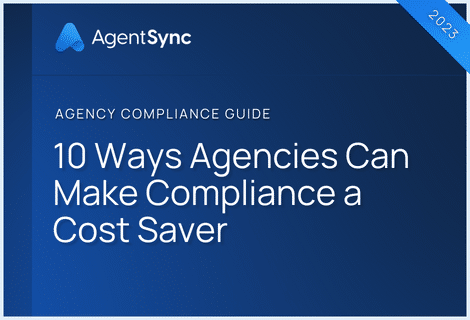

Three years after the initial outbreak, it seems like everyone is ready to put the pandemic in the rearview mirror and go back to life as usual. But there’s no denying that the pandemic, in combination with another major world crisis – climate change – is having lasting effects on the global economy, including consumers’ access to things like affordable housing, materials, labor, and insurance.
The impact of those effects is increasingly clear in the findings outlined in the American Property and Casualty Insurance Association’s (APCIA) recent whitepaper: Hard Market Cycle Arrives: Inflation, Natural Disasters, and More Straining Property Insurance Markets. The report confirms that insurance consumers currently face the hardest P&C insurance market in a generation due to the high rate of inflation and compounding losses from more frequent and severe natural disasters.
Rising economic inflation puts pressure on the P&C market
The rapid increase in the inflation rate since the start of the COVID-19 pandemic has contributed to significant losses in the P&C insurance and reinsurance market. The U.S. inflation rate hit a 41-year high, reaching its peak at 9.1 percent in June 2022. Insurance claims inflation rose even faster, far out-pricing premium increases and contributing to significant underwriting losses.
A shift in supply and demand causes a spike in costs
The COVID-19 pandemic caused a shift in consumer demand from services to goods. As a result, many companies struggled to increase production enough to meet demand from panic buying (lest we forget the great toilet paper shortage of 2020) and major U.S. ports quickly met their cargo limits leading to a spike in materials and labor costs. While U.S. ports have had some relief in the last year, they remain significantly busier than they were pre-pandemic.
Natural disaster losses continue to climb
While the pandemic is typically the scapegoat for the surge in inflation and resulting hard insurance market, there’s another culprit adding fuel to the fire – climate change. 2022 marked the eighth year in a row that the U.S. suffered at least 10 catastrophes costing billions in insured losses. In 2022 alone, the U.S. incurred two-thirds of the total global insured losses.
The increased severity of natural disasters plays a large role in the amount of losses. In fact, Hurricane Ian, which devastated the Florida coast in late September 2022, was the costliest global loss event of the year. But, population, housing, and business growth in hazard-prone areas like coastlines and forest edges is also intensifying the losses these natural disasters cause.
Building trends show no sign of slowing down
At the start of 2022, a 30-year mortgage rate carried an interest rate of just over 3 percent. That number more than doubled, reaching a peak of 7.1 percent in November, before starting a slow decline and rounding out the year at 6.4 percent. Despite the increase in prices, total construction spend for multi-family homes hit a record high at the end of 2022 and total spending on home improvements also remained elevated, according to the whitepaper.
The demand for construction materials and labor is partly due to recent higher losses from natural disasters. The billions of dollars in insured catastrophe losses over the past three-year period have led to a shortage of both materials and labor, as well as additional pressure on the cost of construction materials like lumber, copper, plastic, rubber, and steel. Material and labor costs and availability are likely to remain at these levels due to the growing threat of climate change and continued development in high-risk areas.
Trouble for the P&C insurance market
According to the APCIA report, the elevated construction materials and labor costs are having major effects on the P&C insurance industry. U.S. policyholder surplus plummeted almost 10 percent in 2022 and personal lines incurred an estimated underwriting loss of just under $35 billion, nearly tripling last year’s number.
The 2022 combined ratio (calculated by taking the sum of all incurred losses and expenses divided by the total earned premium) for the U.S. homeowners line is estimated to reach 107.9 percent. A combined ratio over 100 percent indicates that insurers are paying out more money than they are receiving in premiums. This will no doubt exert more upward pressure on insurance rates as P&C insurers work to restore policyholder surplus.
5 steps to profitability
With current hard market conditions threatening the very foundations of the P&C market, finding the path to profitability is going to require some creative solutions from both insurers and policyholders. To stay afloat, carriers should consider adopting the following strategies:
1. Deliver value beyond price
Premiums are increasing and there’s not a whole lot insurers can do to minimize rates. To succeed in the current hard market, insurers should pivot away from competing on price and instead focus on delivering value to their customers beyond low rates. Insurers can create value by committing to underwriting excellence and focusing on better communication between brokers and clients so that they can better place risks.
2. Strengthen business relationships
A strong relationship between carriers and their downstream distribution partners is crucial, especially when navigating hard market conditions. It’s important that carriers and agents can work together not only for their mutual benefit, but for the benefit of their clients as well. Practicing open communication and remaining proactive when it comes to new business are key for both insurers and agencies trying to survive the current hard market and may even help them come out stronger once the market eventually softens.
3. Increase operational efficiency
The high inflation and resulting hard market makes any weaknesses in carrier workflows a lot more apparent. Outdated technology and inefficient workflows obstruct an organization’s growth and chip away at profit margins. By turning to automated solutions, insurers have an opportunity to increase their operational efficiency and streamline core processes like claims management and underwriting.
4. Encourage consumers to aid in reducing losses
True progress will require help from consumers as well. Insurers are already encouraging property owners in areas labeled high-risk to take steps to mitigate their losses by safeguarding their homes and businesses, a trend likely to continue even as premiums increase. The APCIA recommends consumers aid in reducing losses by taking advantage of:
Discounted mitigation measures
Some insurance companies offer discounts on mitigation measures that can help reduce property losses in the event of a catastrophic natural disaster. While the available discounts vary by company, some common examples include discounts for upgraded building materials and installation of safety devices like water sensors, smart thermostats, and smoke detectors
Catastrophe deductibles
P&C insurers strongly encourage individuals to anticipate higher than normal losses and longer than normal rebuild times. In preparation, policyholders may want to consider selecting a higher deductible and increasing their coverage to best fit their needs. Key options include things like replacement cost coverage, ordinance and law coverage, and additional living expense coverage.
5. Mitigation efforts prove promising at limiting losses
To adapt to growing climate-related disasters, insurers urge communities to safeguard their homes and businesses and, as a result, see a meaningful decrease in losses along with more affordable and available insurance coverage. In recent years, we’ve seen these efforts in action and the results are promising.
For example, in 2004, Hurricane Charley hit Florida, damaging and destroying thousands of homes in its path. When rebuilding began, many property owners reconstructed their damaged buildings with stronger materials that followed stricter building codes. When Hurricane Ian hit the same community over a decade later, the re-constructed buildings experienced much less total damage.
While there is no denying the effect the increased frequency and severity of natural disasters has on policyholders, insurers are working hard to develop new and innovative solutions to help meet consumers’ needs. Following risk mitigation measures is proving to be a long-term solution when it comes to reducing individuals’ future losses. A meaningful reduction in losses should have a positive impact on the overall affordability and availability of P&C insurance.
The future of the P&C insurance market
At the end of the day, insurers’ main priority is still to help protect families and communities from losses. They can do this by continuing to help individuals prepare for risks and rebuild and restore their lives and properties after a natural disaster hits.
As high inflation and climate change continue to wreak havoc on the industry, improving operational efficiency will be crucial to the future success of P&C insurers. AgentSync can help carriers eliminate complexity in their workflows and deliver an exceptional distribution partner experience. Make navigating the hard market a little easier with AgentSync.

